Idea by
Bartosz Haduch, Łukasz Marjański
NArchitekTURA
Call for ideas 2021
Memorial Park of the Great Synagogue
Memorial Park of the Great Synagogue
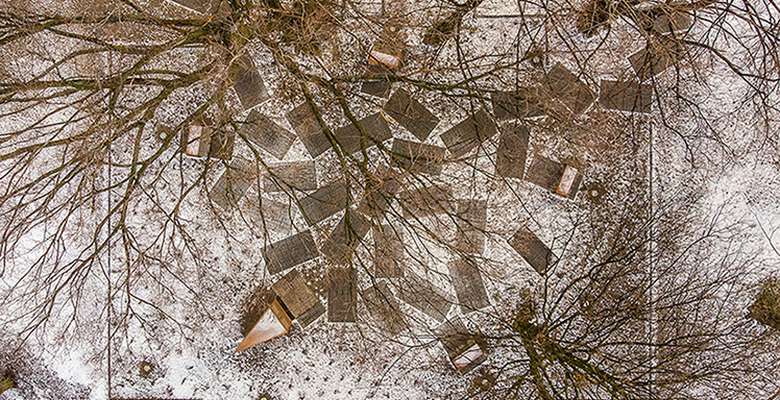
- Site-specific cases
Industrial waste material – gray sandstone slabs with countless irregular cuts became the leitmotiv of the Memorial Park, symbolizing the ruins of the now defunct Great Synagogue (1863-1939) and the paths of life of the multicultural community that were once criss-crossing in this place. The slabs are decorated with "frieze" made up of countless grooves of varying depths. These cut-in-stone lines create a "relief" that changes its appearance depending on the atmospheric conditions. Interestingly this pattern does not result from the work of architects using latest technologies, but was created by accident. In the quarry these large slabs were used as bases for cutting smaller formats and no one had ever come up with the idea of using them in construction. Classified as industrial waste, they were reused and "brought back to life” in the city of Oswiecim (near Auschwitz) – as a gesture of opposition to excessive exploitation of natural resources and promotion of re-cycling.
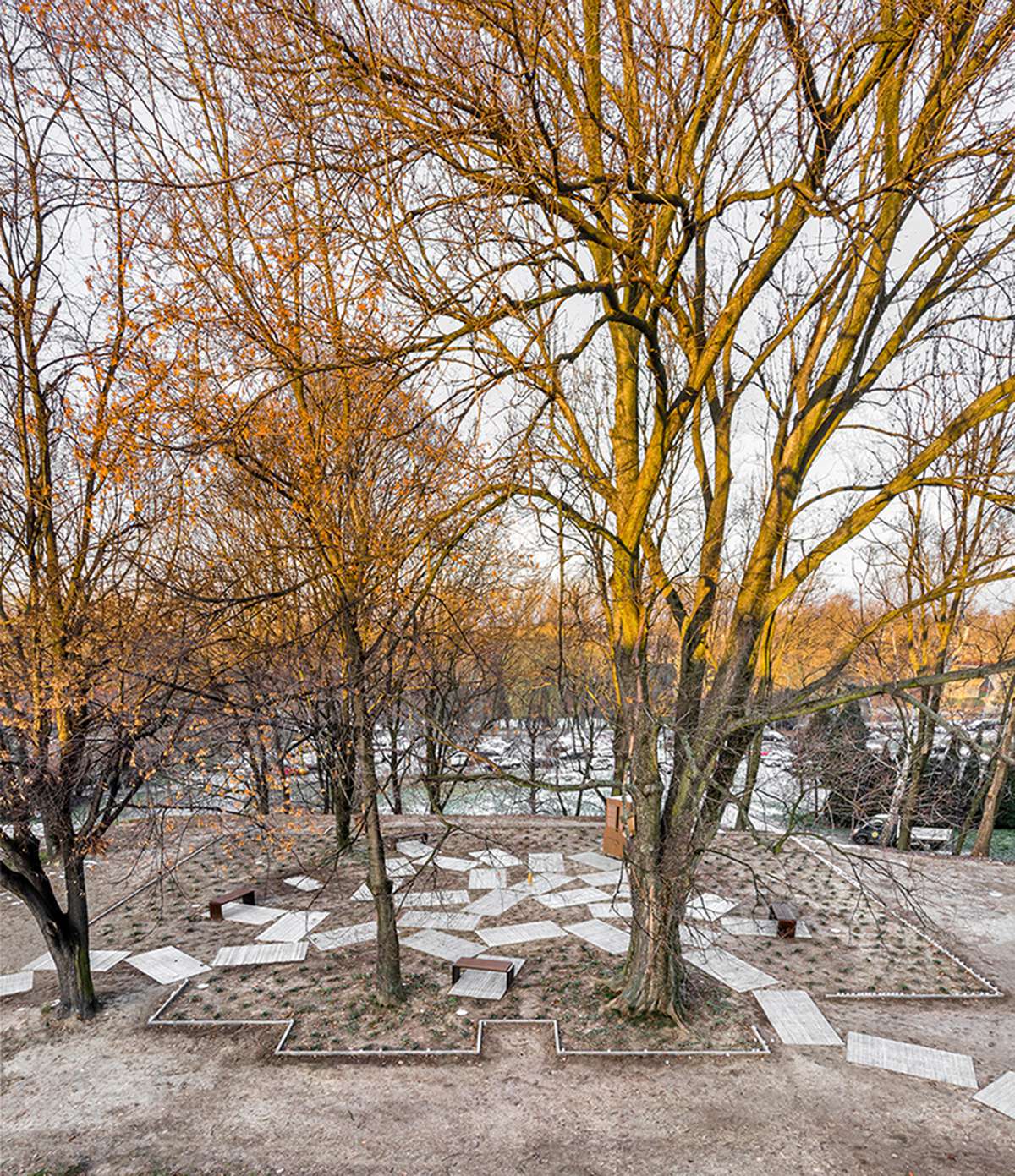
References to the temple demolished 80 years ago take on various forms in the new project. The outline of the former synagogue is marked by a narrow curb, separating the interior of the park from the dense greenery surrounding it. The project mat be regarded as an architectural interpretation of "landscape of care" - from micro to macro scale.
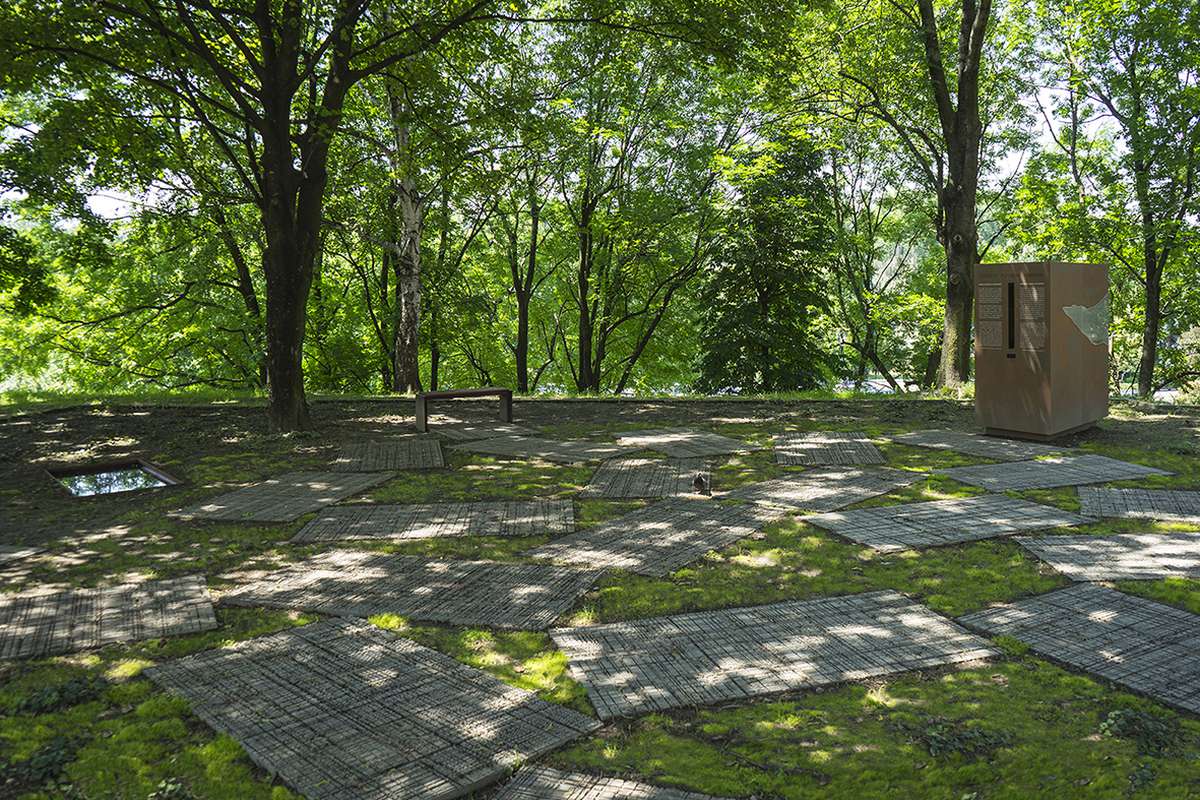
Individual slabs form paths leading to other elements of the park: an outdoor exhibition module presenting the history of the synagogue (stylistically referring to our previous project of the nearby Auschwitz Jewish Center), a "well" with historical floor (planned in the next stage of the development), a shallow water pond, Corten benches and a chandelier (which is a copy of an artifact found here during archeological works).
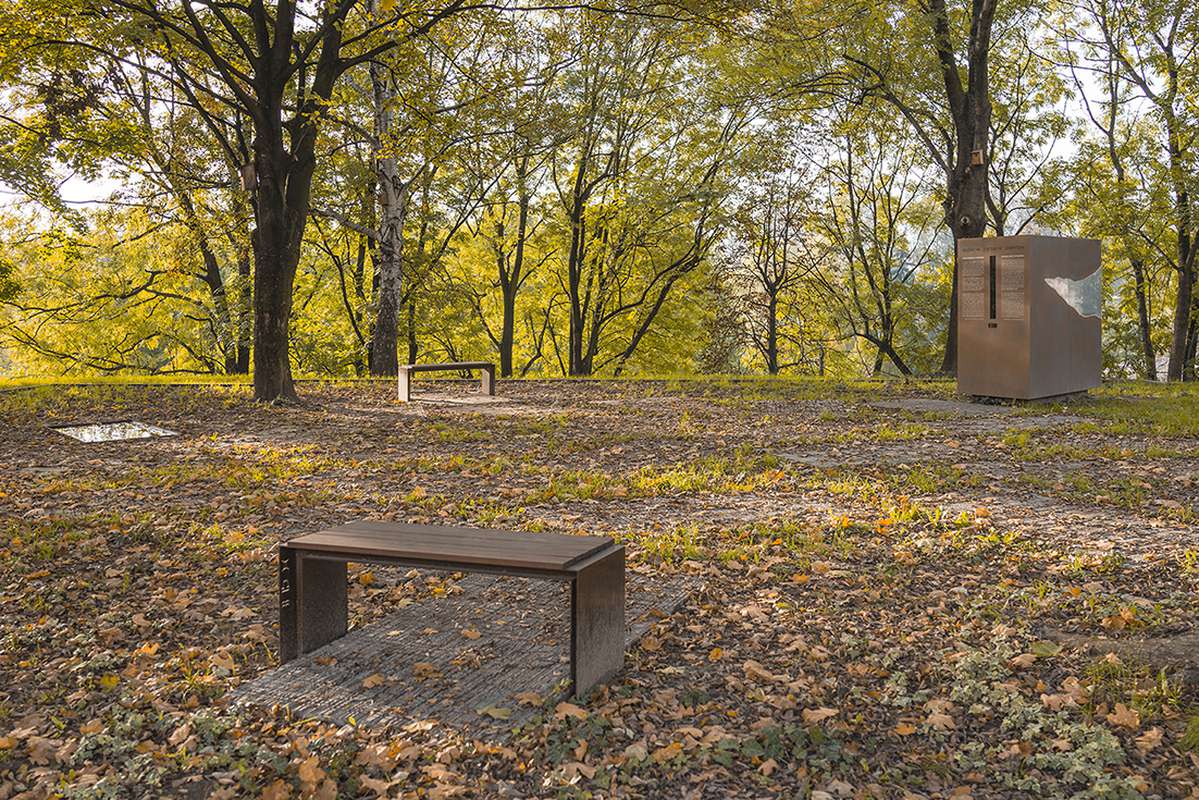
The new square opens up to the picturesque panorama of the embankments of the Soła River on the west side. The project was possible thanks to local Jewish Center, but also because of numerous donations of local and international community.
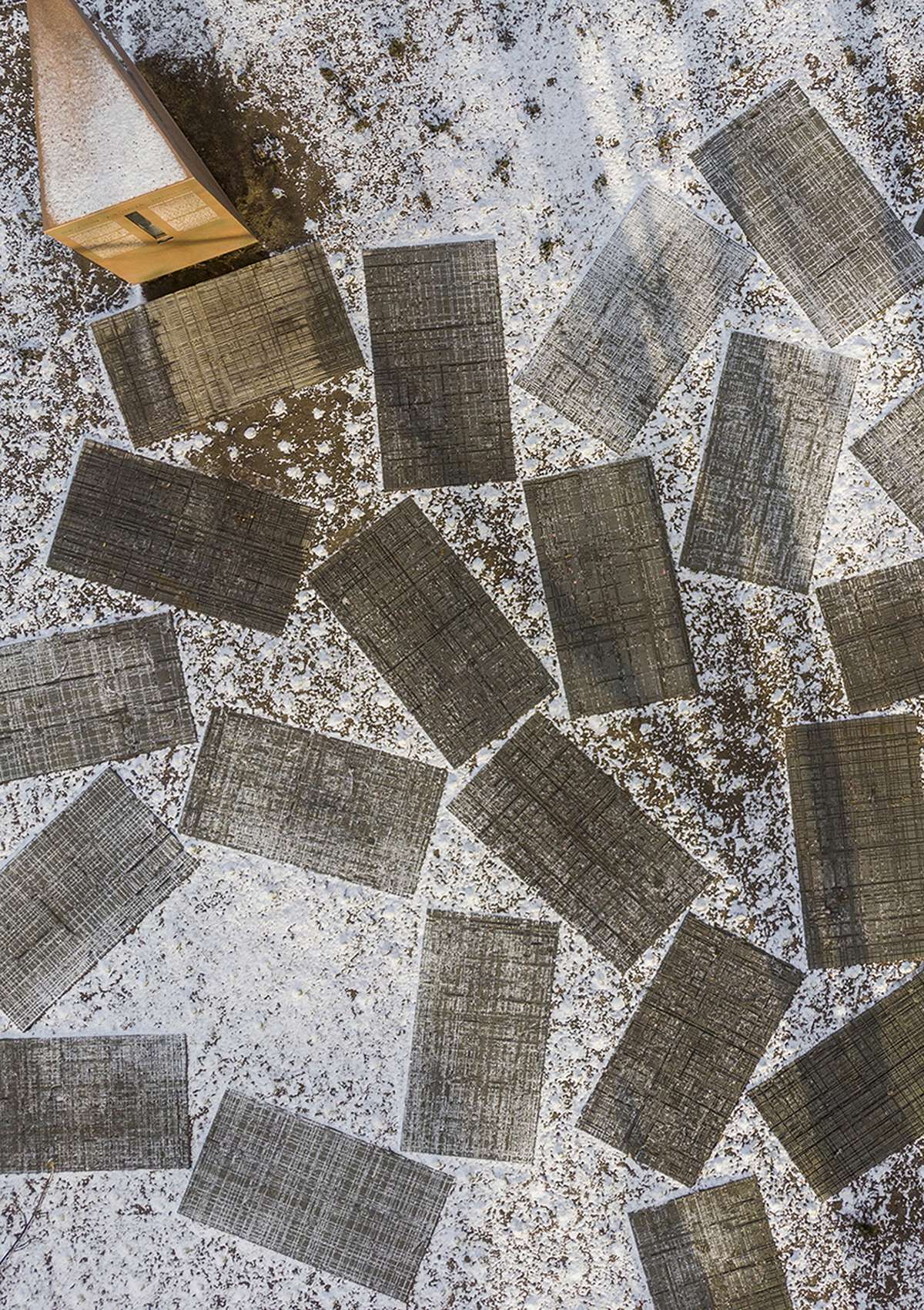
Industrial waste material – sandstone slabs with irregular cuts is the leitmotiv of the project. This „cut-in-stone” history of Oswiecim, near Auschwitz German Camp, the Great Synagogue and the ruins remaining after its destruction aims at preserving the memory of the past, with a warning message for the future, at the same time beautifully celebrating the present.
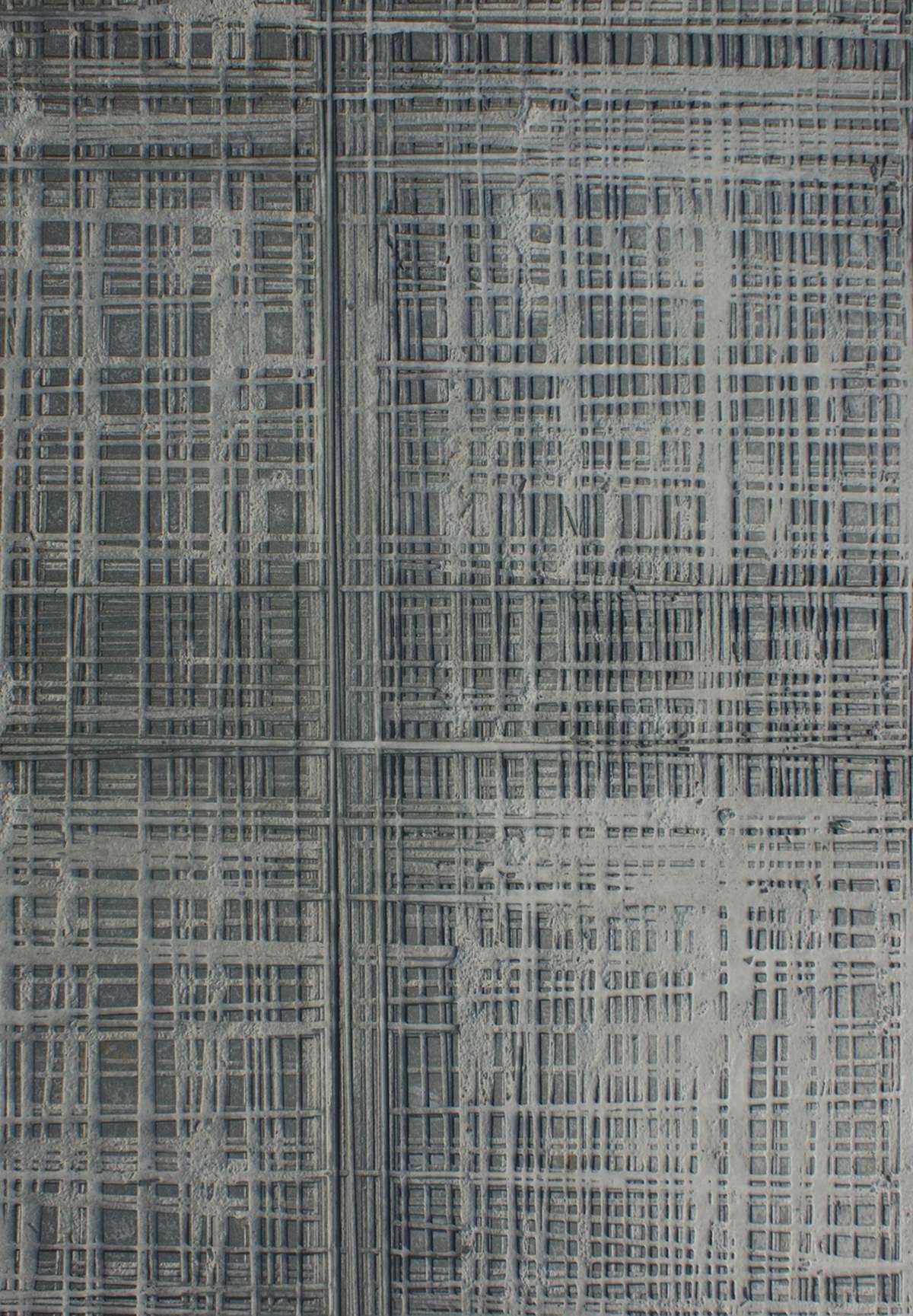
The criss-crossing cut-in-stone lines also take on a symbolic dimension. Without any clear beginning or end, they seem to be heading towards infinity. This dense network of lines evokes the paths of human life, that sometimes just intersect, and at other times connect to go on together. A seemingly abstract mosaic may also resemble the now defunct urban layout of a pre-war city – its streets, pavements and buildings.
Memorial Park of the Great Synagogue
Memorial Park of the Great Synagogue

- Site-specific cases
Industrial waste material – gray sandstone slabs with countless irregular cuts became the leitmotiv of the Memorial Park, symbolizing the ruins of the now defunct Great Synagogue (1863-1939) and the paths of life of the multicultural community that were once criss-crossing in this place. The slabs are decorated with "frieze" made up of countless grooves of varying depths. These cut-in-stone lines create a "relief" that changes its appearance depending on the atmospheric conditions. Interestingly this pattern does not result from the work of architects using latest technologies, but was created by accident. In the quarry these large slabs were used as bases for cutting smaller formats and no one had ever come up with the idea of using them in construction. Classified as industrial waste, they were reused and "brought back to life” in the city of Oswiecim (near Auschwitz) – as a gesture of opposition to excessive exploitation of natural resources and promotion of re-cycling.
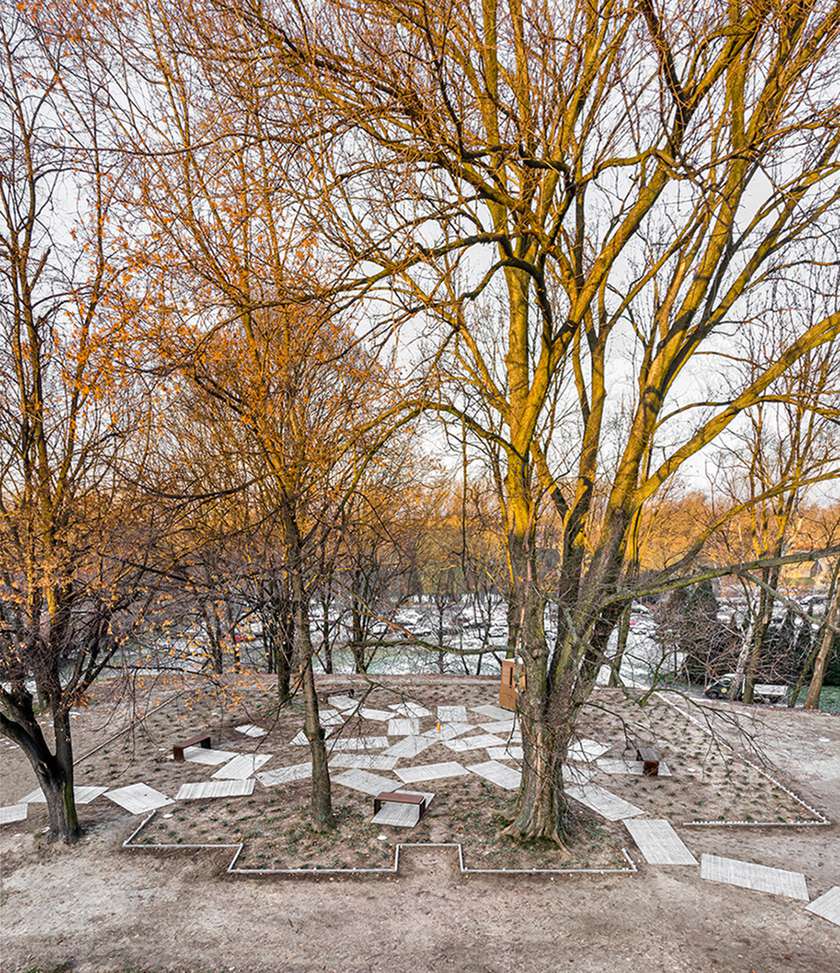
References to the temple demolished 80 years ago take on various forms in the new project. The outline of the former synagogue is marked by a narrow curb, separating the interior of the park from the dense greenery surrounding it. The project mat be regarded as an architectural interpretation of "landscape of care" - from micro to macro scale.
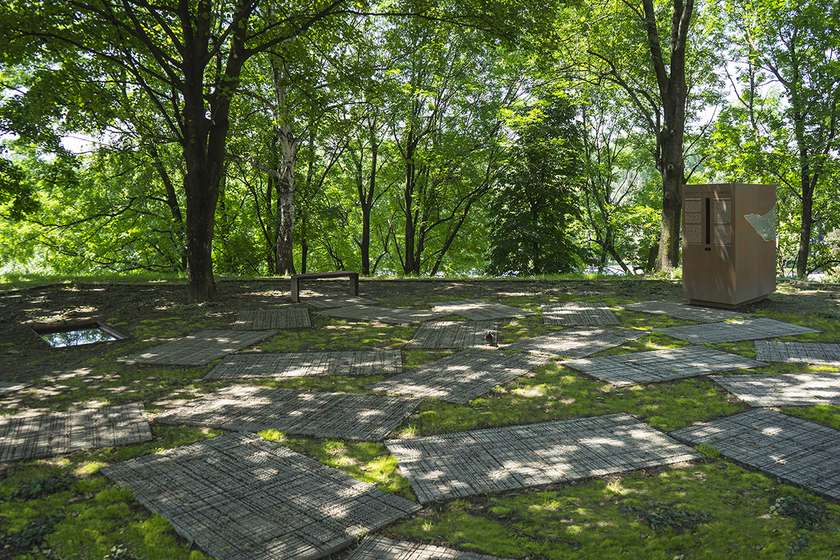
Individual slabs form paths leading to other elements of the park: an outdoor exhibition module presenting the history of the synagogue (stylistically referring to our previous project of the nearby Auschwitz Jewish Center), a "well" with historical floor (planned in the next stage of the development), a shallow water pond, Corten benches and a chandelier (which is a copy of an artifact found here during archeological works).
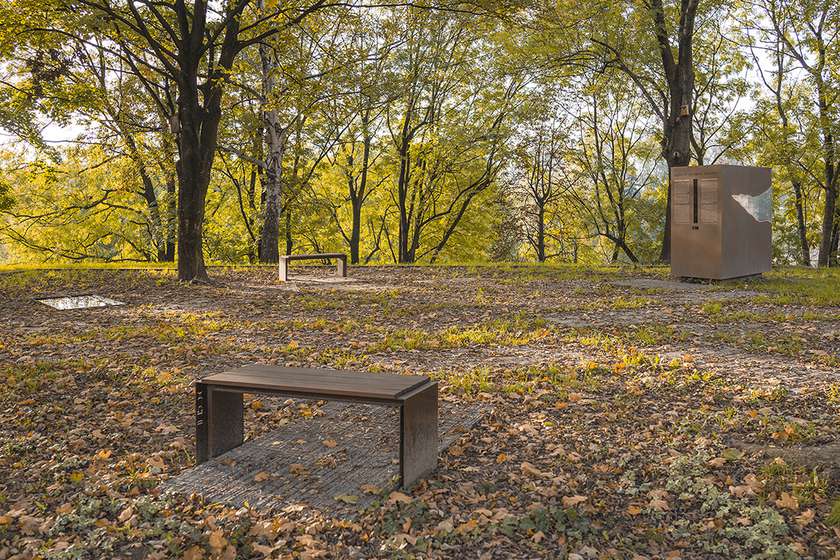
The new square opens up to the picturesque panorama of the embankments of the Soła River on the west side. The project was possible thanks to local Jewish Center, but also because of numerous donations of local and international community.
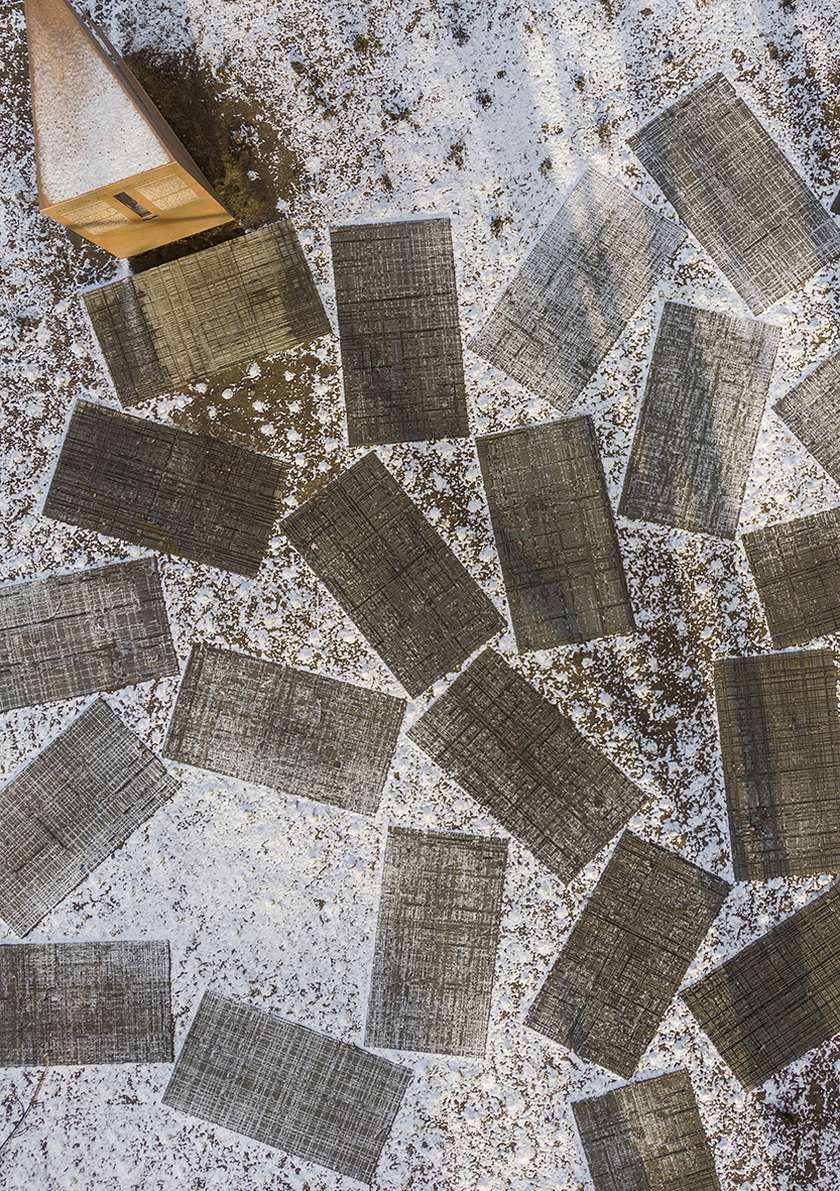
Industrial waste material – sandstone slabs with irregular cuts is the leitmotiv of the project. This „cut-in-stone” history of Oswiecim, near Auschwitz German Camp, the Great Synagogue and the ruins remaining after its destruction aims at preserving the memory of the past, with a warning message for the future, at the same time beautifully celebrating the present.
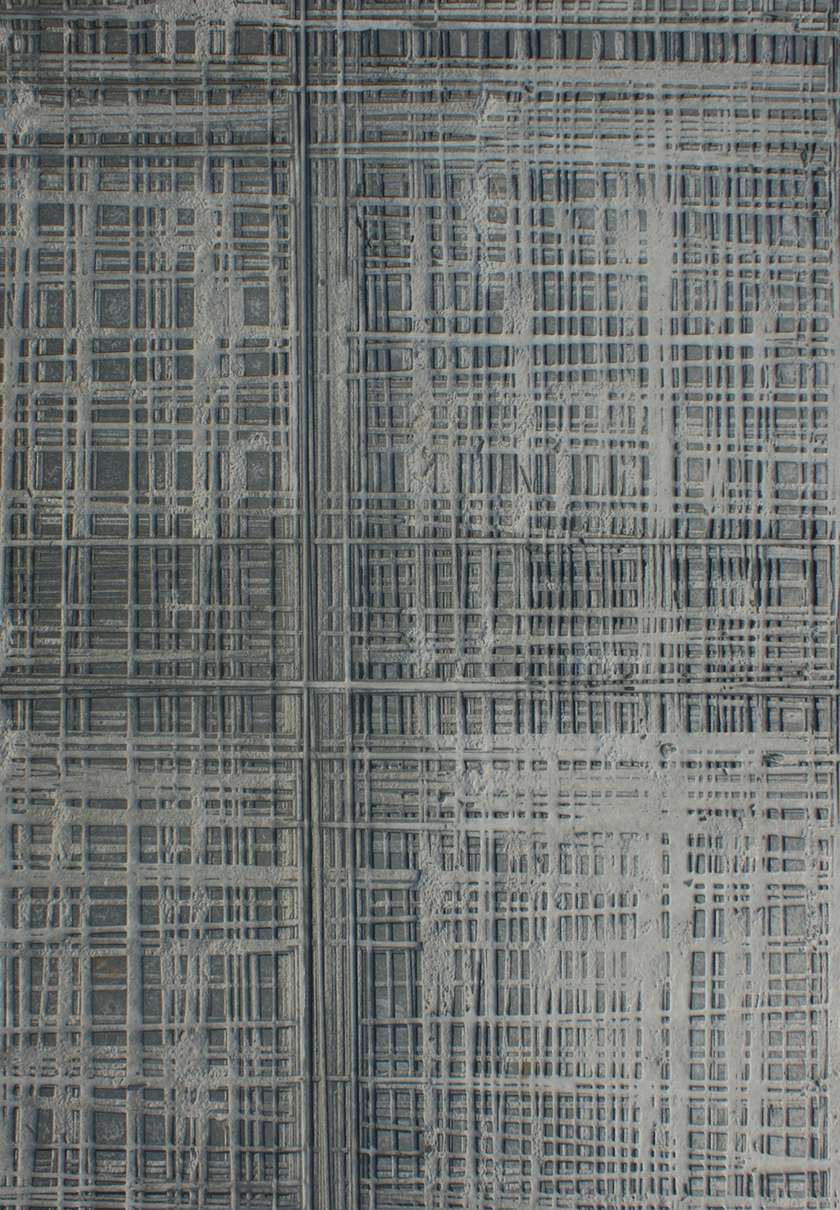
The criss-crossing cut-in-stone lines also take on a symbolic dimension. Without any clear beginning or end, they seem to be heading towards infinity. This dense network of lines evokes the paths of human life, that sometimes just intersect, and at other times connect to go on together. A seemingly abstract mosaic may also resemble the now defunct urban layout of a pre-war city – its streets, pavements and buildings.